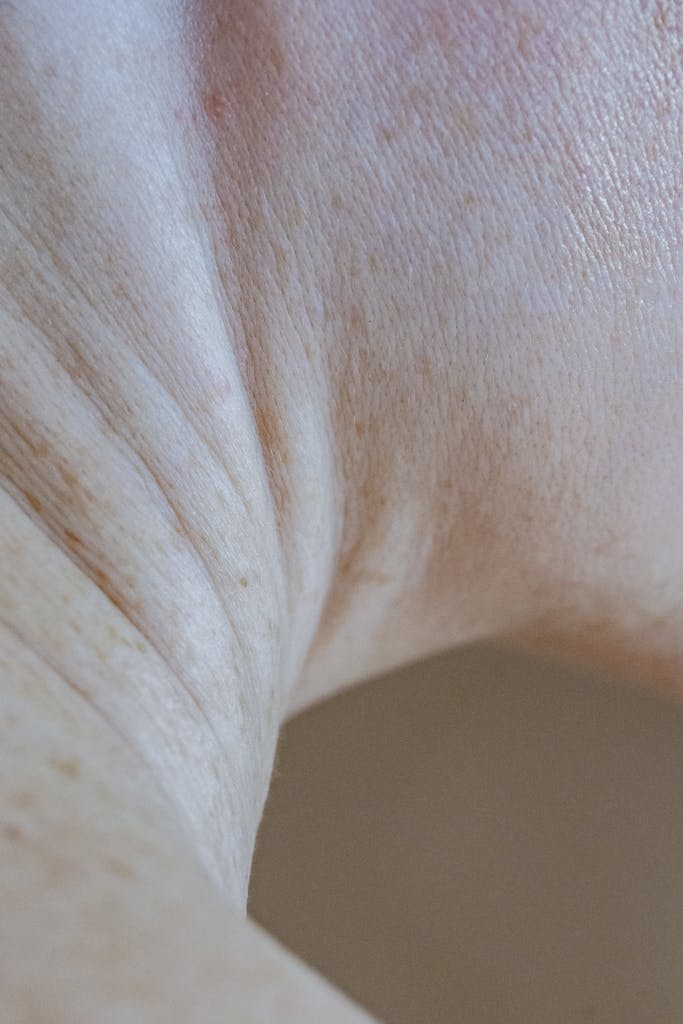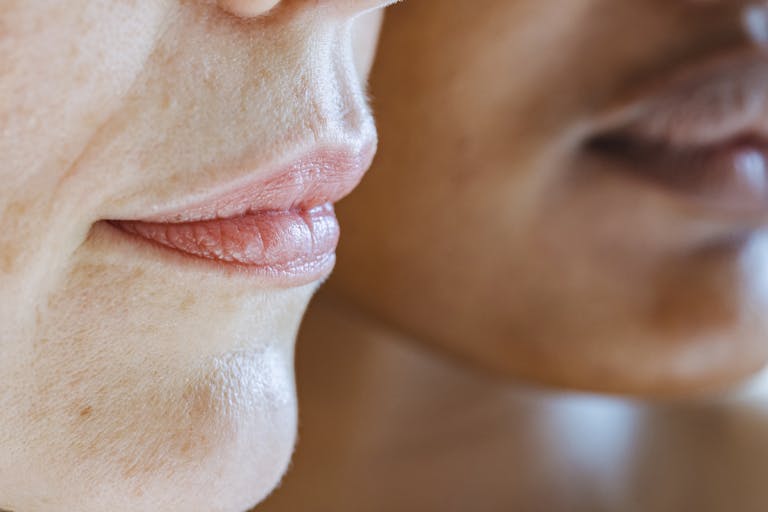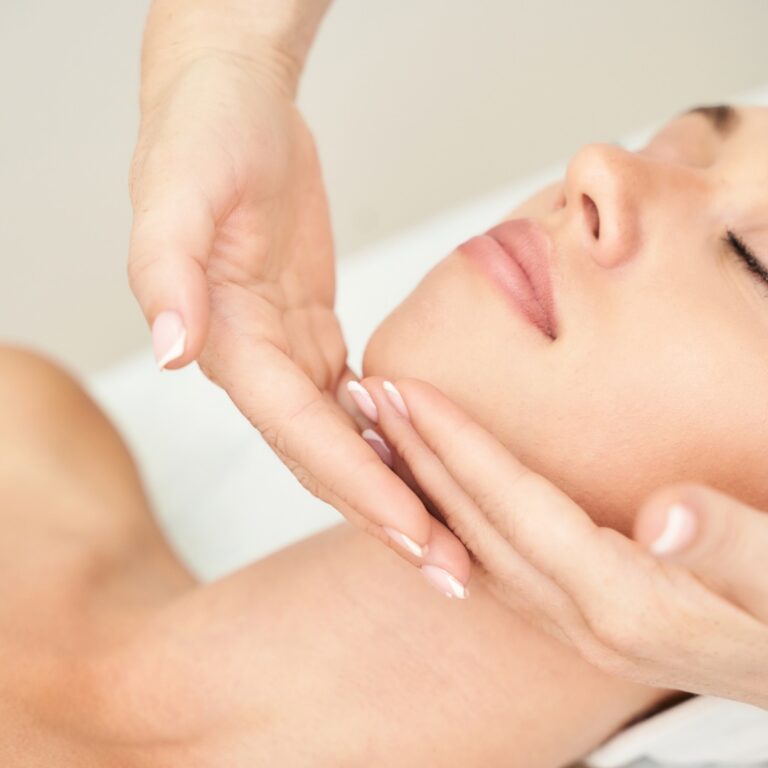How To Get Rid Of Sun Spots On The Face
Sun spots, also known as age spots or brown spots, are a common skin concern, especially in sunny, outdoorsy places like Colorado.
If you’re looking to get rid of sun spots, brighten your complexion, or address uneven skin tone, understanding what causes these spots is the first step in treating them effectively.

What Are Sun Spots?
The color (pigment) in your skin comes from something called melanin. Everyone’s skin tone is unique because we all naturally produce different amounts of melanin.
Sometimes, the skin produces an excess amount of melanin in a particular spot, which causes that patch of skin to look significantly darker than the surrounding area.
Those spots are called hyperpigmentation, because there is an excess of melanin—and therefore pigment—in the skin.
Hyperpigmentation is usually harmless, but it can affect your appearance in several ways, causing your skin to look:
- Uneven in tone
- Dull or lackluster
- Older or more aged
- Congested (by mimicking sebaceous filaments)
What Causes Hyperpigmentation?
Hyperpigmentation can form for many different reasons.
The Key Culprit: Sun Exposure
Sun exposure is by far the most common cause of hyperpigmentation.
Sunspots are caused by prolonged exposure to ultraviolet (UV) radiation from the sun. UV rays trigger excess melanin production, leading to those darkened patches.
If you’re often outside, you’ll notice that the areas of skin exposed to the sun tend to have more sun spots than the ones usually covered up.
That’s why sun protection and sunscreen are the #1 most effective way to prevent hyperpigmentation from forming. No sun exposure, no sun spots.
Other Causes of Hyperpigmentation: Acne, Hormonal Changes
Melanin clusters can form in the skin for other reasons, too.
Other causes of hyperpigmentation include:
- Acne breakouts, called post-inflammatory hyperpigmentation (PIH).
- Hormonal changes, usually triggered by birth control or pregnancy. This is the primary cause of melasma.
- Aging.
- Certain medications, including chemotherapy and antibiotics.
- Genetics.
How To Get Rid Of Sun Spots On The Skin
We already know that sunscreen can prevent hyperpigmentation (sun spots) from forming, but how do we get rid of the hyperpigmentation we already have?
There are several ways to eliminate sun spots on the skin.
The Best Treatments for Sun Spots
These are medical grade topicals, chemical peels, and laser treatments.
Medical-Grade Topicals: Best for Mild Pigment and Maintenance
Medical-grade serums and creams that feature Hydroquinone, Retinoids, Vitamin C, or Tranexamic Acid are always going to be the most effective topical treatments for hyperpigmentation.
Best For: melasma, mild hyperpigmentation, and overall maintenance between in-clinic treatments.
Our favorite topicals for hyperpigmentation are:
- Pigment Control + Brightening Creme (4% Hydroquinone, 20% Vitamin C) – by prescription only
- Brightalive® Skin Brightener (Tranexamic Acid, Niacinamide)
- Retinol Skin Brightener (available in 0.25%, 0.5%, and 1.0% strengths)
At Beauty Rehab in Dillon, CO we create a fully-customized skincare regimen to select the perfect medical-grade topicals for you.
Who Needs Topical Treatments
You are an ideal candidate for medical-grade topical treatments if you have:
- Mild hyperpigmentation.
- A darker skin tone.
- Time and patience to wait for your treatments to work.
How Topicals Treat Sun Spots
Topical treatments work to improve brown spots, age spots, and sun spots in slightly different ways.
- Hydroquionoine, Vitamin C, and Tranexamic Acid all block melanin production, preventing new hyperpigmentation from forming. As the body naturally cycles out the existing hyperpigmented skin cells, you will be left with skin that looks brighter and more even-toned.
- Retinoids speed up skin cell turnover, which helps the body to slough off over-pigmented skin cells and replace them with healthier, even-toned ones more quickly.
Chemical Peels: Best for Melasma and Deep Pigment
A chemical peel is a skin treatment that uses acids to remove the top layer of dead skin, including skin containing excess pigment. Chemical peels also encourage skin cell turnover and collagen production, treating hyperpigmentation that is deeper in the skin.
Best For: Melasma, sun damage, deeply-embedded hyperpigmentation, and mild-to-moderate post-inflammatory hyperpigmentation (PIH).
At our med spa in Dillon, CO, we create fully-customized chemical peels for every patient.
Who Needs Chemical Peels
You are an ideal candidate for Chemical Peels if you have:
- Melasma.
- Large patches of slightly darker skin (as opposed to smaller, darker “spots”).
- Hyperpigmentation deep within the skin (in the dermis).
- Stubborn pigmentation that is unresponsive to lasers and topicals.
- A darker skin tone.
Laser Treatments: Best for Sun Spots and Post-Acne Marks
There are many kinds of lasers and light-based devices that can treat hyperpigmentation, including:
- CO2 Lasers, like our CoolPeel and DEKA lasers
- Intense Pulsed Light (IPL)
- Nd:YAG Lasers
Best For: Sunspots, severe post-inflammatory hyperpigmentation (PIH)
At our medical spa in Summit County, CO, our favorite lasers for treating hyperpigmentation are the CoolPeel and DEKA CO2 lasers.
Who Needs a CO2 Laser Treatment
You are an ideal candidate for a CO2 laser if you:
- Have hyperpigmentation that looks like small, dark, clearly-defined spots.
- Have hyperpigmentation in the top layer of the skin (epidermis). This is where most sun spots and PIH manifest.
- Want to avoid significant downtime.
- Have sensitive skin, rosacea, or eczema.
How CO2 Lasers Treat Hyperpigmentation
CoolPeel and DEKA are both CO2 lasers that work by delivering tightly-controlled energy into the skin. That energy blasts apart the clusters of melanin that form sun spots and dark spots.
When the melanin is broken down into smaller chunks, the body can more easily process and remove it. This process also triggers collagen production beneath the surface of the skin, encouraging the body to produce healthier, even-toned skin.
The CoolPeel laser is a non-ablative CO2 laser treatment that uses short pulses of light to create tiny openings in the skin without directly damaging the surface of the skin. The DEKA laser is an ablative laser that creates controlled damage directly to the surface of the skin.
The CoolPeel laser has less downtime, but the DEKA delivers better results.
If your hyperpigmentation is severe or treatment-resistant,, we use our Skin Smoothing Laser Treatment: a fully-ablative CO2 laser that is powerful enough to wipe out even the most stubborn or deeply-set pigment.
For mild to moderate hyperpigmentation, we prefer to stick with the CoolPeel laser.
CoolPeel vs Chemical Peels
|
CoolPeel Laser |
Chemical Peels |
|---|---|
|
Precise treatment |
Treats large areas |
|
Ideal for small, dark spots |
Ideal for diffused pigmentation |
|
Targets the epidermis (where most hyperpigmentation forms) |
Can go deep into the dermis (where more stubborn hyperpigmentation resides) |
Say Goodbye to Sun Spots – For Good
Sun spots and hyperpigmentation don’t have to be permanent.
Whether you’re dealing with sunspots from years of outdoor activities or post-acne marks that won’t fade, the right treatment can help you achieve brighter, more even-toned skin.
The best way to get rid of sun spots? A customized treatment plan designed for your skin type, concerns, and lifestyle.
At Beauty Rehab in Dillon, Colorado, our skin specialists work with you to find the most effective solution—whether it’s medical-grade topicals, chemical peels, CO2 laser treatments, or a combination approach.
Schedule your free consultation at Beauty Rehab in Dillon, Colorado, now offering sun spot and hyperpigmentation treatments to patients in Silverthorne, Frisco, Keystone, and Breckenridge.
We’re here so you can enjoy the sun without the spots – all season long.


